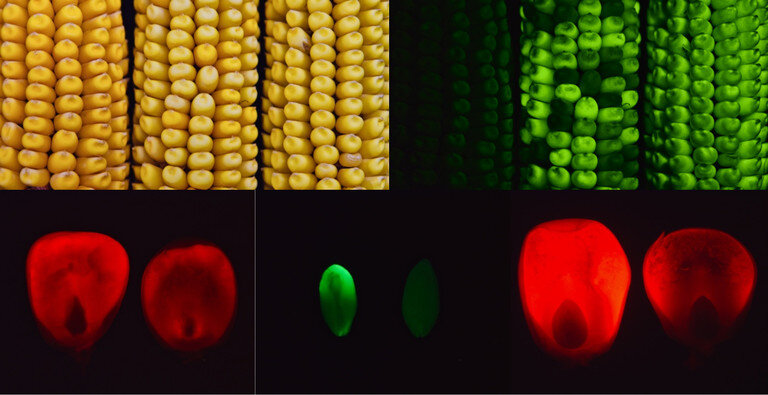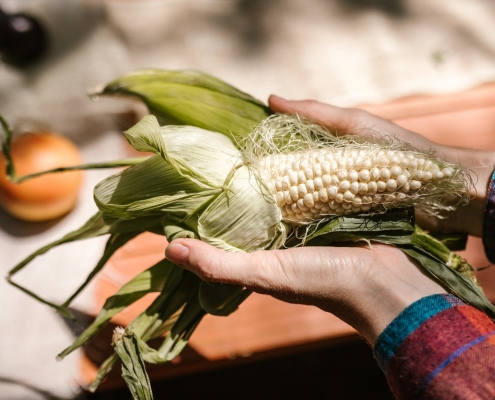Mutant corn gene boosts sugar in seeds, leaves, may lead to breeding better crop
by Jeff Mulhollem, Pennsylvania State University
An abnormal build up of carbohydrates—sugars and starches—in the kernels and leaves of a mutant line of corn can be traced to one misregulated gene, and that discovery offers clues about how the plant deals with stress.
That is the conclusion of Penn State researchers whose previous study discovered the Maize ufo1 gene responsible for creating the mutant corn line. They now are assessing its effects and potential for inclusion in breeding new lines of corn better able to thrive in a warming world. The finding of higher sugar levels in plant tissues in their latest study is just another aspect for plant geneticists to consider.
“This discovery has implications for food security and breeding new crop lines that can better deal with a changing climate—with corn, there is still a lot to be done,” said Surinder Chopra, professor of maize genetics in the College of Agricultural Sciences. “In fact, there is a great deal of genetic and phenotypic diversity in corn, and we can use that diversity and ask the question, ‘How is the ufo1 gene distributed in the existing 10,000 germplasm lines?'”
Can plant geneticists select for some of that diversity and incorporate the ufo1 gene to improve corn? That is the question Chopra is trying to answer, starting with this new study that found elevated sugar levels in seeds and leaves of the mutant corn line.
What traits can be improved in corn with the ufo1 gene’s help?
“Certainly, stress tolerance, but also likely seed development, which has implications in seed yield as well as improved biomass,” Chopra said. “And we would like to develop a better plant type that could grow in more dense culture, yet still be more productive. And finally, we need to look at resiliency and sustainability. Can we breed corn lines that get the same amount of yield with lower fertilizer inputs and need less water?”
Chopra started research on the Maize ufo1 gene because of its association with an orange/red pigmentation in the mutant corn line. Celebrated maize geneticist Charles Burnham, at the University of Minnesota, identified this conspicuous ufo1 mutant circa 1960. Another well-known maize geneticist, Derek Styles, with the University of Victoria, Canada, a student of Burnham’s, then chose the name, which stands for “unstable factor for orange.”
> Source: PHYS.ORG




 Credit: Wikimedia@Wilhelm Thomas Fiege / insektenwirtschaft.de /CC0 Public Domain
Credit: Wikimedia@Wilhelm Thomas Fiege / insektenwirtschaft.de /CC0 Public Domain Credit: Pexel @Flambo /CC0 Public Domain
Credit: Pexel @Flambo /CC0 Public Domain